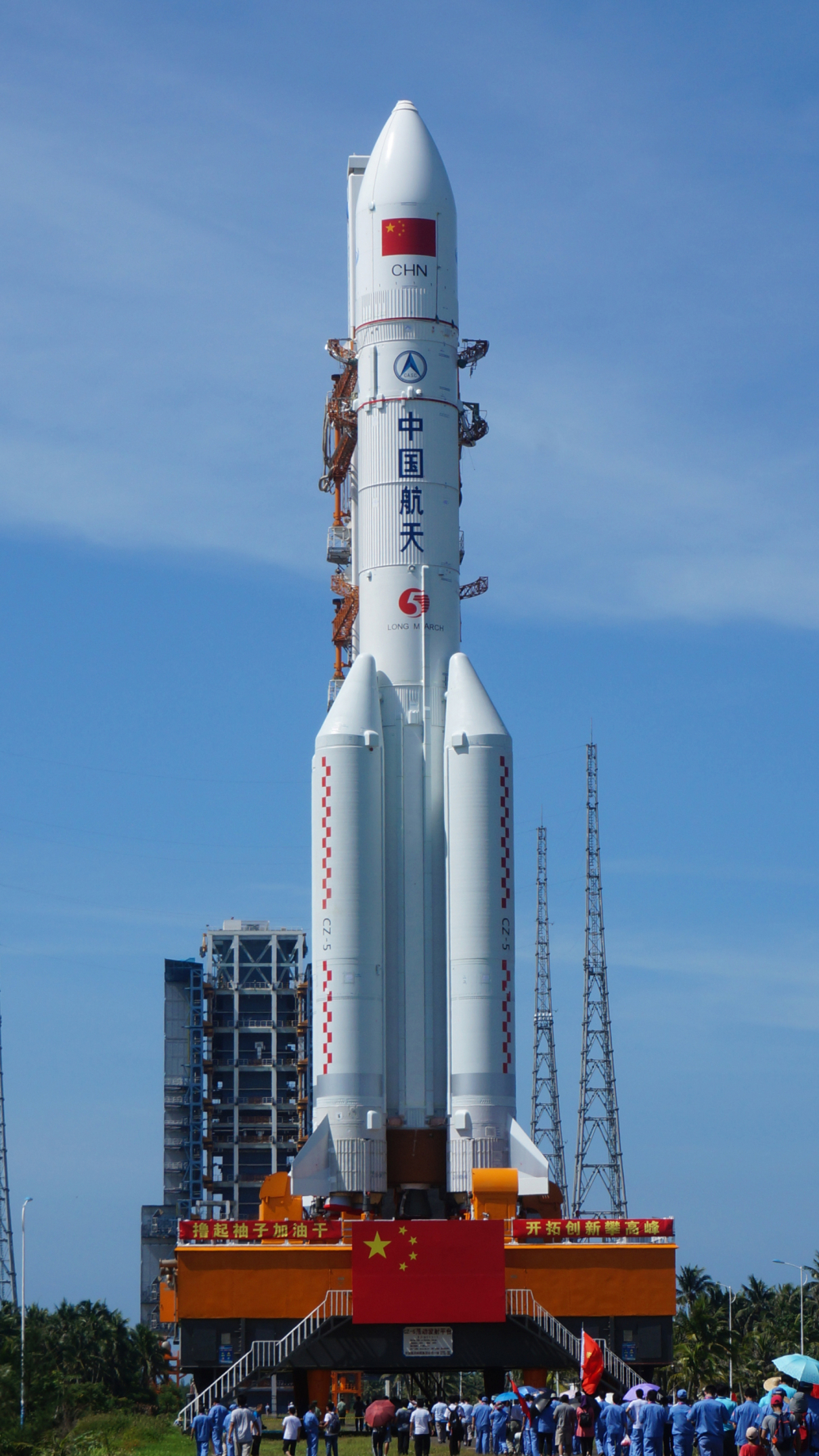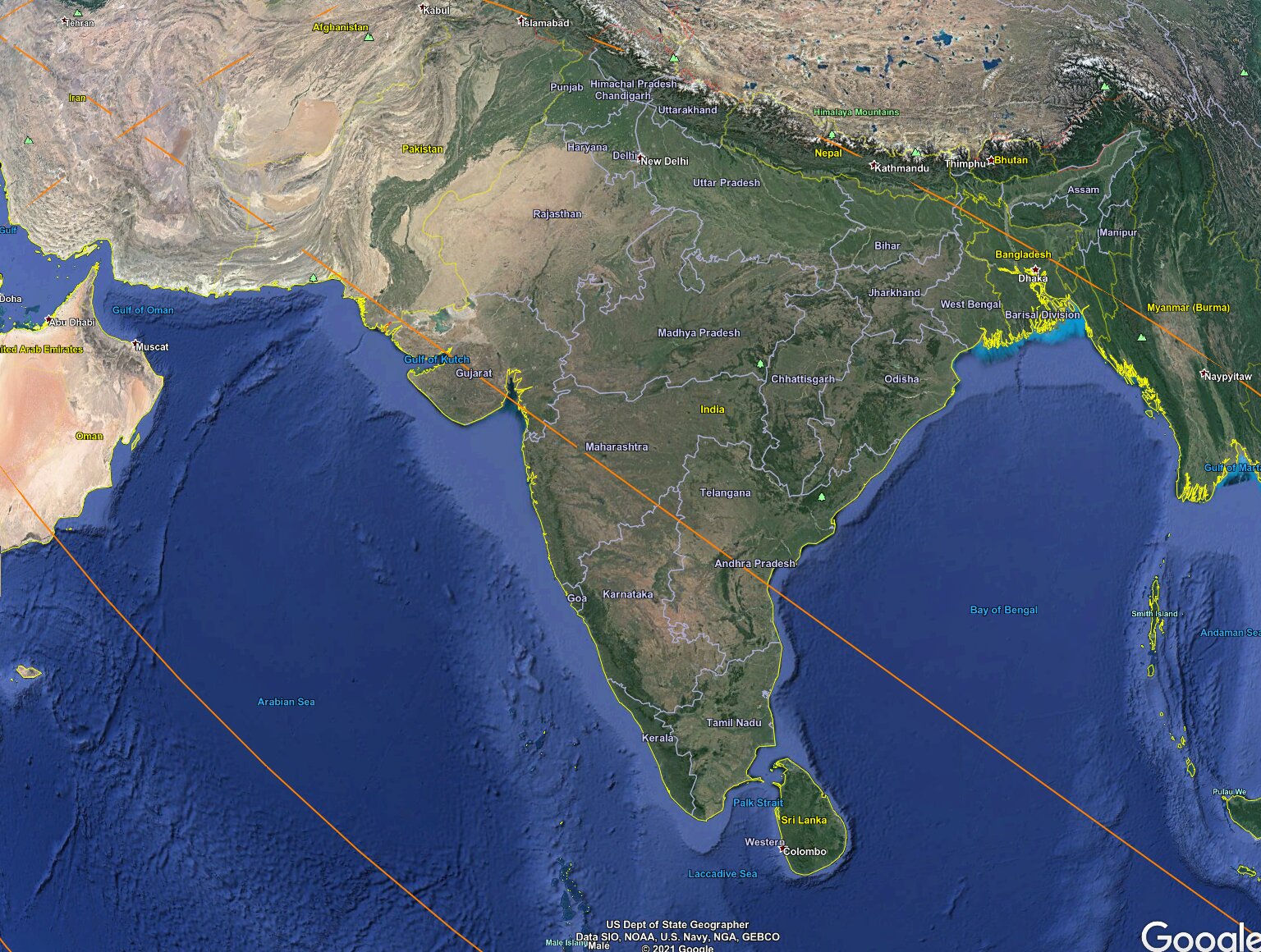
Chinese rocket debris likely to hit Earth today. When and where is anyone’s guess
About 100-foot-long portion of a Chinese rocket, Long March 5B, is likely to hit the earth’s surface anytime this weekend. The big question is when and where? While scientists are still scrabbling for answers, Indians are on guard, like many other people the world over, for a possibly hard impact.

About 100-foot-long portion of a Chinese rocket, Long March 5B, is likely to hit the earth’s surface anytime this weekend. The big question is when and where? While scientists are still scrabbling for answers, Indians are on guard, like many other people the world over, for a possibly hard impact.
Long March 5B blasted off from Hainan Island on April 29 to deliver China’s first module of the country’s new space station into orbit. The core stage, however, got separated from the module and has been heading towards earth in an ‘out-of-control’ manner since then. The Chinese space authorities have no control over the falling debris, however, China’s Global Times reported that the plummeting rocket portion is ‘unlikely’ to cause any damage as “it will fall in international waters”.
Is India in the line of fall?
According to the U.S. Space Command, which is tracking the falling portion, the rocket’s trajectory lies between north of New York City and south of New Zealand. All the areas in between are potential crash sites. A portion of western Maharashtra and all of South India fall in the impact zone. However, Jonathan McDowell, an astronomer associated with the Center for Astrophysics in US, tweeted to say, “Kerala and Tamil Nadu are clear, as are most the northern states like Uttar Pradesh and Odisha.” McDowell’s statement could be interpreted in a way that the probability of the debris hitting India’s land mass is minimal.

Why don’t we know the time and place of impact?
Initially it was believed that the falling object will burn up in the atmosphere, but, unfortunately, that has not happened. However, Wang Yanan, chief editor of Aerospace Knowledge magazine, said, “Most of the debris will burn up during re-entry … leaving only a very small portion that may fall to the ground, which will potentially land on areas away from human activities or in the ocean.”
At present, the rocket core is plummeting at a speed of 18,000 miles an hour and looping around Earth once every 90 minutes. Scientists hope the portion will decay as it comes down, but the decay or disintegration will depend upon a variety of factors which includes puffiness of the atmosphere, the strength of its head winds and structure of the object’s several layers, which is hard to predict. Hence, the uncertainty around its impact and time of impact. But as per media reports, the debris is expected to re-enter and crash between 1.30 PM UTC (7.30 PM IST) on May 8 and 7.30 PM UTC on May 9 (1.00 AM IST on May 10).
A National Geographic report stated: “Even a half-hour’s uncertainty in timing could mean the difference between smashing into Illinois or landing half a world away. The rocket’s general entry point in the atmosphere won’t be known until shortly before it actually happens.”
Also read: Why India must keep chasing its space dream
How bad could be the hit?
The 22 ton portion of Long March 5B core stage is not likely to be destroyed completely as it falls through Earth’s atmosphere. The size of the core, when it actually hits earth’s surface, is likely to be determined by friction caused by air, which will break it into pieces. How big the portion will be is difficult to predict, because it will depend on its shape, mass and several other variables.
Scientists sure impact will be in the oceans
The possibility of debris falling on land is negligible, say scientists, since oceans cover a majority of the surface on earth. They say the possibility is high that the debris, very small in size, will fall over the Pacific Ocean, the National Geographic reported.
The Guardian, however, predicts the portions crashing on Earth would roughly be 30 metres long and weighs over 20,000 kg, making it one of the longest debris to ever fall on the earth.
Also read: Most exciting, says ex-ISRO chief on space station plans
Where to get updates from?
The U.S. Space Force’s 18th Space Control Squadron will provide daily updates to Space-track.org. The Aerospace Corporation and LeoLabs too are posting updates on Twitter so does Jonathan McDowell’s twitter handle.
For China, history repeats itself
Portions of a similar Chinese rocket have hit the earth close to a populated area in May 2020 when China launched a Long March 5B that delivered a prototype spacecraft into orbit. The debris fell in the Atlantic Ocean, but metal rods damaged buildings on Ivory Coast. No human casualties were reported.
In 2018, China’s first space station, Tiangong-1, returned to Earth and broke up over the Pacific Ocean. China had lost control of the 8.5-ton space station in 2016 and was no longer able to boost its altitude so it could maintain its orbit.

